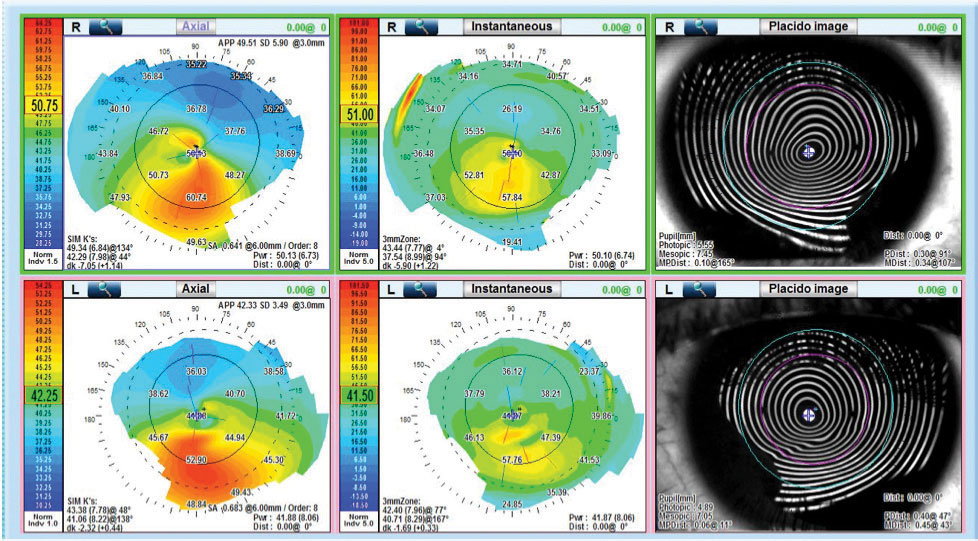 |
|
Patients with higher inter-eye asymmetry in Kmax may require closer follow-up since they’re more likely to progress; however, age is the most significant progression predictor. Photo: Thomas A. Wong, OD, and G. Timothy Petito, OD. Click image to enlarge. |
While most cases of keratoconus are bilateral, the specific corneal changes may manifest asymmetrically. Current research suggests that the degree of asymmetry between eyes at presentation could potentially differentiate healthy individuals from those with keratoconus and may indicate future disease progression. A study recently published in Cornea analyzed real-world keratoconus outcomes in the prospective, international Save Sight Keratoconus Registry and found that asymmetry at presentation may be useful for incorporating into future progression algorithms.
The analysis included 4,342 untreated eyes from 2,171 keratoconus patients. The researchers reported that 333 patients demonstrated progression of steepest keratometry (Kmax or Max-K), thinnest corneal thickness pachymetry (TCT) or both, while 1,838 patients had stable parameters. They determined that younger baseline age and higher baseline inter-eye asymmetry in Kmax were associated with a higher incidence of progression in corneal steepening. Younger age at baseline was the only progression predictor in TCT, the researchers wrote.
“Inter-eye asymmetry in Max-K at baseline could be incorporated, alongside other single-eye parameters, in algorithms for determining the risk of keratoconus progression,” the researchers concluded in their Cornea paper. “Clinicians should be aware that patients with a big inter-eye asymmetry in Max-K at their first visit may need closer follow-up as progression in Max-K is more likely to occur than in patients with small inter-eye differences in Max-K. Moreover, although the steepest eye is two times more likely to show progression, this progression can occur in just the fellow eye.”
Arnalich-Montiel F, Ortiz-Toquero S, Kandel H, et al. Intereye asymmetry as a predictor of progression in patients with untreated keratoconus: findings from a longitudinal study. Cornea 2024;00:1-5. [Epub ahead of print]. |


